Description
The following is from
Shropshire Folk-Lore A Sheaf of Gleanings
by Charlotte Sophia Burne and Georgia Jackson
printed in 1888
CHAPTER III
Legends and Traditions
WILD EDRIC
“Said the son unto the father, ‘There are horsemen on the wold!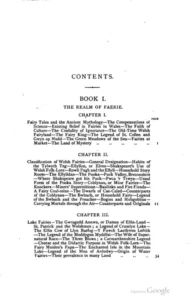
Mounted warriors, riding chargers, trembling, snorting, grey, and cold,
Keeping rank they come, close marching, six by six and three by three,
Lances gleaming, banners steaming, in the death-wind floating free.
Over hill and vale nine stone-casts, stretches forth the gallant train,
‘Tis King Arthur with his army! ’tis King Arthur comae again!’
‘ If ’tis Arthur, follow, follow! take each man his bow and spear!’
‘Forward! follow! ‘ rang the war-cry, o’er the mountains far and near.”
Chants Populaires de la Breiagne (tr. C.S.B.).
 It will be necessary to trespass a good deal upon the domains of history in order to do full justice to the legend of a ‘popular hero’ so little known, and so important, that he demands a chapter to himself. The name of Hereward le Wake, the patriot of the Isle of Ely in the days of the Conqueror, is sufficiently famous, but that of his contemporary Edric Silvaticus, Salvage, or the Wild, the leader of revolt on the Welsh borders, has not been celebrated in romance, and is consequently comparatively forgotten. Yet his exploits make a much larger figure in trustworthy history than the somewhat shadowy doings of Hereward.’
It will be necessary to trespass a good deal upon the domains of history in order to do full justice to the legend of a ‘popular hero’ so little known, and so important, that he demands a chapter to himself. The name of Hereward le Wake, the patriot of the Isle of Ely in the days of the Conqueror, is sufficiently famous, but that of his contemporary Edric Silvaticus, Salvage, or the Wild, the leader of revolt on the Welsh borders, has not been celebrated in romance, and is consequently comparatively forgotten. Yet his exploits make a much larger figure in trustworthy history than the somewhat shadowy doings of Hereward.’
‘Wild Edric,’ to give him the name which Salopian tradition assigns to him, was nephew to Eadric Streona, the infamous Ealdorman of the Mercians under Ethelred the Unready, and was himself the owner of considerable estates in Shropshire and Herefordshire.

Maybe you remember me as the Dutchman that bought your print “The hanged man” but without the hanged man (Ludlow Medieval Christmas Fayre 2010, you gave me a discount). Last year during the Ludlow Medieval Christmas Fayre my girlfriend bought me my second print. It was a gift for our fifth anniversary. Finally I had it framed and I am so very pleased with it. Everyone who see it says WAUW! I made a photo of it and attached it to this email.
I hope to see you and your new work in November at the Ludlow Fayre.
Your Dutch fan, Remco Schenk
In Domesday Book he appears under the name of Edric Salvage, as having held in Shropshire the manors of Hope Bowdler, Weston-under-Red-Castle, and (with another) Middleton, in the days of Edward the Confessor. He is certainly the person meant by ‘Edric,’ who at the same time had owned Chelmarsh, Walton Savage, Eudon George, Overton, and Rudge—in all of which manors he was succeeded by under-tenants of Ralph Mortimer. There is also preamptive evidence that he was the ‘ Edric, a freeman,’ who had held Bayston, Pitchford, Cantlop, Adderley, and ‘ Elmundewic.’ But there was at least one other tenant-in-chief named Edric in Shropshire in the time of King Edward, and it is impossible in all cases to distinguish between them. In his five Herefordshire manors-as well as those in Shropshire already mentioned—he was succeeded by Ralph Mortimer of Wigmore Castle.
Nowhere was he succeeded by any who can with any probability be set down as his children.
Very early in the Conqueror’s reign, in August, 1067, when his sovereignty over more than half the shires was in reality only nominal, we find Wild Edric already in arms against him. Hereford was one of the few counties which had then been subdued, owing no doubt to the presence of the Norman Richard Fitz Scrob and his followers, whose fortress of Richard’s Castle, near Ludlow, the first building of the kind in England, had already provoked the indignation of his English neighbours in the days of the Confessor. Richard and his men, aided by the garrison of Hereford, continually harried Eadric’s land, because he refused to submit to the new king. Eadric therefore allied himself with the two Welsh kings Bleddyn and Rhiwallon, both of whom had been followers of Harold in former times. These three with their forces harried Hereford as far as the river Lugg, and after remaining long enough to reduce the garrison of Hereford to great distress, they returned home laden with enormous booty.

Loving my new picture! Have found a great spot for it where I can sit and admire it.
So lovely to meet you – keep up the good work. Had trouble trying to Facebook photo in its new home so hope you are able to add to your gallery.
Carca a pawb ‘r enilla
Rachel from Leeds
Two years afterwards, when the greater part of England had submitted, we find Eadric still independent. In the great rising of 1069, when almost every shire took up arms, Shrewsbury, which had been garrisoned by the Conqueror, was besieged by the united forces of Bleddyn of Wales (now sole king), and the men of Cheshire, — a shire still untouched by the Norman invaders, — ‘to whom the inhabitants of the town, with Edric Guilds, a powerful and warlike man, were auxiliaries.” By tremendous exertions on the part of the Conqueror these various risings were at length put down, and in the following year, 1070, (probably soon after the departure of that Danish fleet which had been the support of the revolt in the north), Eadric, that ‘vir strenuissimus,’ as the chronicler Simeon of Durham calls him, made peace with the king. It is nowhere said that he submitted.
Only the Isle of Ely still held out, and this last isolated strong- hold was broken up in the following year. Little by little the old landmarks were done away, the old earldoms abolished. The Norman was master of the land.
Two years later Eadric appears among the personal followers of William in his expedition against the Scotch in the autumn of 1072—an arrangement probably intended to keep the wild Marchman safely under the king’s own eye. And this is the last that authentic history has to say of our Border champion, save the negative evidence of Domesday, that all his lands passed into the hands of Normans, most of them into those of Ralph Mortimer of Wigmore. There is, however, in the Monasticon a quotation from the family chronicler of the House of Mortimer, which mentions Eadric, but with so many glaring mistakes of detail that it is hard to decide whether there can be any foundation for any part of the account it gives of him. The historian of Shropshire, Mr. Eyton, says, ‘All that I venture to conclude [from it] is, that some time between 1072 and 1085, Edric Sylvaticus forsook his allegiance to King William; that William fits Osborn, Earl of Hereford, being dead, Mortimer was appointed by the king to reduce Edric; that Mortimer succeeded in so doing, and obtained many of the forfeited estates of Edric as a reward for this service; but that he became Lord of Wigmore [which was built by William fitz Osbern, – not, as the chronicler declares, as the conqueror of Edric, to whom it never belonged—but] as the king’s principal lieutenant in Herefordshire after the forfeiture of Earl Roger de B1-itolio [son of William fitz Osborn] in 1074. The fate of Edric Sylvaticus is unchronicled, for the words of the Mortimer annalist, which point to death in prison, can only be taken as indicating the writers ignorance of any specific fact.
Knocking in the lead mines
Most likely some mystery hung over his end. For it is not many years since, in the West Shropshire hills, in the very neighbourhood where Edric’s estates lay, and where also lay the greater number of the very few Shropshire manors retained after the Conquest by Englishmen (no doubt Edric’s old friends and comrades, perhaps his kindred), there were people to be found, if there are not some now, who believed Wild Edric to be still alive, imprisoned in the mines of that wild west country. He cannot die, they say, till all the wrong has been made right, and England has returned to the same state as it was in before the troubles of his days) Meantime he is condemned to inhabit the lead-mines as a punishment for having allowed himself to be deceived by the Conqueror’s fair words into submitting to him. So there he dwells with his wife and his whole train. The miners call them the ‘Old Men,’ and sometimes hear them knocking, and wherever they knock, the best lodes are to be found.’ Now and then they are permitted to show themselves. Whenever war is going to break out, they ride over the hills in the direction of the enemy’s country, and if they appear, it is a sign that the war will be serious.
If you see him, hide
Such, in substance, was the account given some years ago by a young women from Rorrington to her mistress, who repeated it to me. The lady, wishing to draw out the girl’s’ knowledge, professed not to understand whom she meant by the ‘Cong-kerry,’ as she called him. ‘ What! did you never hear of the Cong-kerry, ma’am! ‘ exclaimed the maid, who, by the way, could neither read nor write. ‘Why, he used to hang up men by the heels because they were English! Oh, he was a bad man!’


She declared that she had herself seen Wild Edric and his men. It was in I853 or 1854, just before the Crimean war broke out. She was with her father, a miner, at Minsterley, and she heard the blast of a horn. Her father bade her cover her face, all but her eyes, and on no account speak, lest she should go mad. Then they all came by; Wild Edric himself on a white horse at the head of the band, and the Lady Godda his wife, riding at full speed over the hills. Edric had short dark curly hair and very bright black eyes. He wore a green cap and white feather, a short green coat and cloak, a horn and a short sword hanging from his golden belt, ‘and something zig-zagged here’ (touching her leg below the knee). The lady had wavy golden hair falling loosely to her waist, and round her forehead a band of white linen, with a golden ornament in it. The rest of her dress was green, and she had a short dagger at her waist. The girl watched them pass out of sight over the hills towards the north. It was the second time her father had seen them. The former time they were going southwards. ‘And then Napoleon Bonaparte came.’
‘Many people say,’ added our authority, ‘that the miners always do seem to know when a war is going to be desperate.’
Flocks of Wildfowl and storms of wind are generally considered to account for stories of the passing of the Wild Huntsman; but what an extraordinary imagination it must have been which suggested all these elaborate details!
I never succeeded in getting a second version of this curious story, and the woman who told it could not be traced. But its points of likeness to other such legends, and also its variations from them, are too remarkable to leave room for any doubt of its being a genuine piece of folk-tradition.
The name given to Edric’s wife, the “Lady Godda,” curiously coincides with that of Frau Gauden or Gode, the huntress of whom Mecklenburg tradition tells that her impious words, ‘The chase is better than heaven,’ doomed her to follow it to all eternity.’
It is always dangerous to meet the Wild Hunt. Either death, madness, or blindness may be the consequence. In German tales, the common precaution is to throw oneself face downwards on the ground; in ours, the girl was desired to cover her face with her shawl, and not to speak. In all the stories of Hackelberg, the Wild Huntsman of Westphalia and Saxony, death overtakes those who address him or mock his hunting cry And we all know that a ghost can do no harm unless the ghost-seer speaks to it.
The coming of Edric and his train was heralded by the sound of a horn. Now when Thomas the Rhymer led the horse-dealer to the recesses under the Eildon hills, and showed him the multitude of men and horses wrapped in magic sleep in long rows of underground stalls awaiting the battle of Sheriff Moor, he showed him also a horn and a sword. Whoever should blow the one and draw the other, would break the spell which held them motionless.’
Indeed, though there may be some points of likeness between the vision of Wild Edric and that of the Wild Hunt, our legend is far more closely akin to another grand myth, that of the Enchanted Heroes, such as the Rhymer’s army, and as those many champions –the great Karl, Frederick ‘Barbarossa,’ Holger Danske, the Nibelungs, the Three Confederates of Switzerland—who slumber in the hills and caves of kindred lands of the Continent, ready to awaken in the hour of their country’s utmost need.’
Often, too, is it told of kings who have fallen in battle, ‘He is not dead; he will return.’ So it was said of Harold after Hastings, of Olaf Tryggvason, of Sebastian of Portugal, of Roderick ‘ the last of the Goths.’ Every conquered nation too (and the English, in Wild Edric’s day, were a conquered nation has its dream of a Golden Age under some famous ruler, who will one day come again and bring back the good old times. Irish, Servians, Mexicans, Moors, – all look for their own beloved champion; and who does not know that King Arthur will return.
The Bretons, the exiled descendants of his people (if indeed he ever lived, or ever had a people I), believe that he leads them on to battle even now. And ‘whenever a war is threatening, there may be seen, as a prophetic sign, the army of Arthur defiling over the tops of the dark mountains at the break of day,’ just as did Edric and his men over the Shropshire hills.
But there is one remarkable difference between the history of Wild Edric and those of other champions of the oppressed They all died in fair fight at the head of their men, striving manfully to the last. Edric gave up the struggle and “made peace.” Accordingly, while they are rapt away into some quiet and peaceful mating-place until better times, his prolonged life, we find, is not given him as a blessing, but as a doom. When the good old days come again, his lot will be, not to reign in triumph, but to die in peace.
Over and over again in popular tales is it found that the deeds and attributes of the gods of one age are repeated in the heroes and demigods of another, and thus it is no surprise to us to learn that this myth of the spell-bound hero who shall return, bringing victory, is but a reminiscence of the doings of the supreme god of our heathen forefathers —Woden, the victory-bringer, the war-god, riding his grey horse at the head of his Einherjar or chosen warriors, the spirits of the brave who have fallen in battle, and whom he leads sometimes to the battle-field of their living friends, sometimes to the chase of the wild boar Saehrimnir, which each day is slain and each morrow revives to afford them a fresh hunt, a fresh capture, a fresh feast.
The madness which was to be the consequence of addressing Wild Edric’s band is a mark of their once-divine character. In all ages and countries insanity has been thought to be a token of inter course with the gods; sometimes sent in anger (quem Deus vult perdere prius dementat), but more often as a mark of divine favour, so that the poor lunatic’s utterances have been regarded in the light of prophecies and treated with respect. And Woden’s own name,’ be it remembered, signifies the Madman, the ‘wud,’ raging deity. He is in his original character, the ‘Teutonic representative of the universal Storm-God, riding on the blast, driving the clouds before him, and scattering them as a victorious general the foe. Then the storm sinks to rest—in that cavern of the winds, it may be, of which we read in Grecian fable,–yet the Storm-God is not dead, but sleeping; he is but spell-bound; he will return!
So thought our fathers in the early ages of the world, when they believed the powers of nature to be living godlike beings, acting after their own will. And yet, when all is said, this steadfast looking for a deliverer who shall bring back a Golden Age, which is so deeply rooted in the traditions of every nation, can hardly be regarded solely as a nature myth by those who remember how the promise of the Great Deliverer was given ere the gates of Eden closed on our first parents. Thence their descendants have everywhere carried with them the knowledge of the God who hideth His face for a season, and shall one day come again, making the clouds His chariot, and riding upon the wings of the wind.


 Click a section to zoom in. These are
Click a section to zoom in. These are 






































































































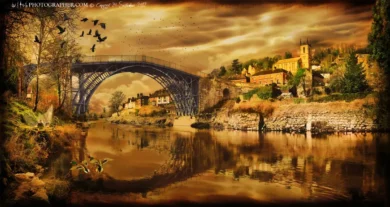
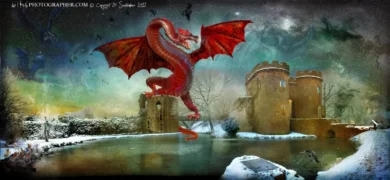


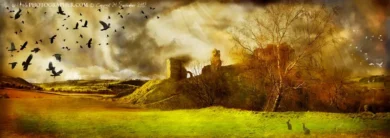


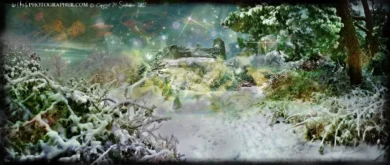
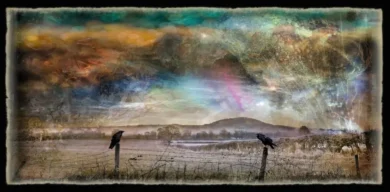
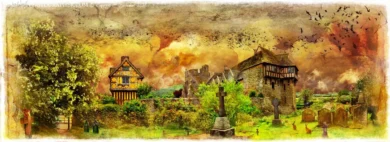
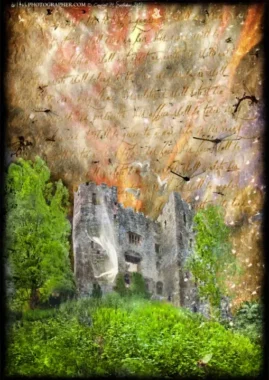
Reviews
There are no reviews yet.